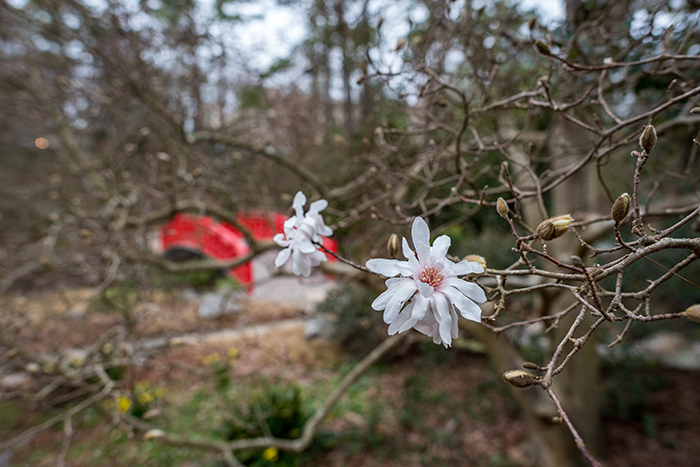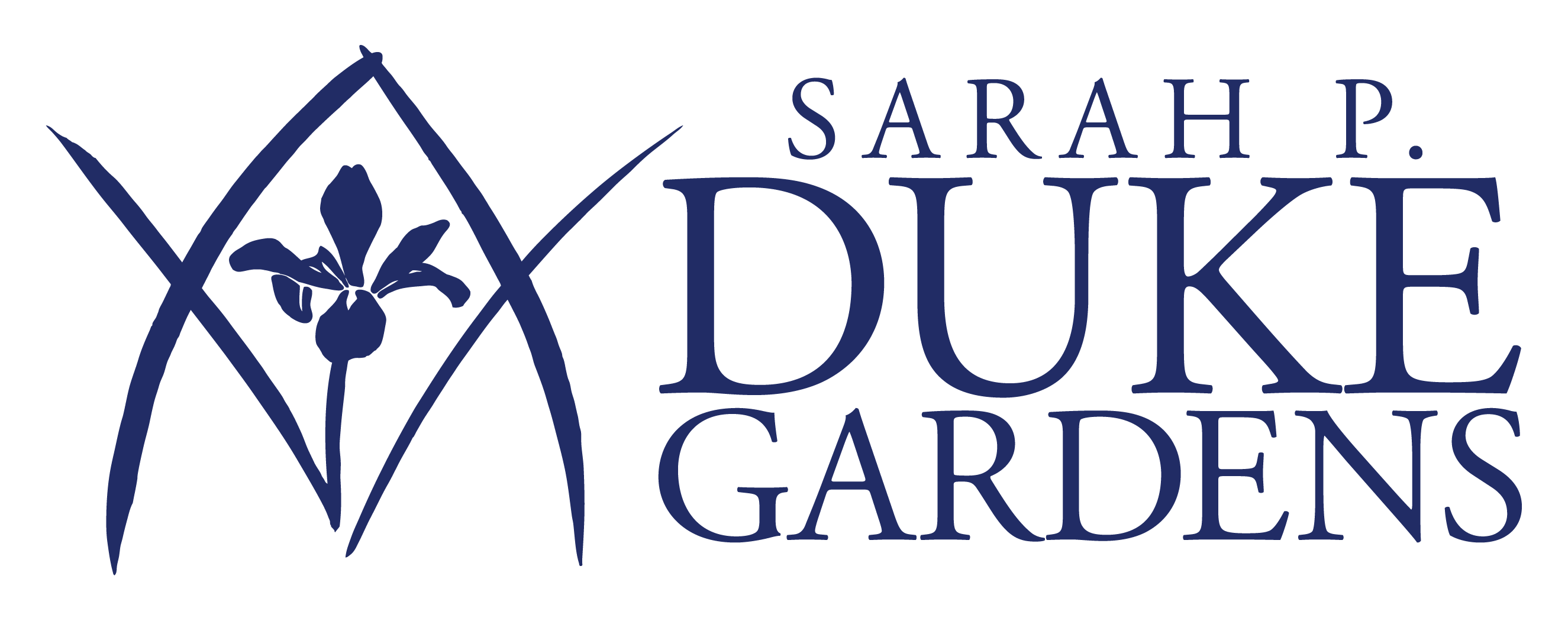
A Loebner magnolia (Magnolia × loebneri ‘Ballerina’) with the Meyer Bridge in the background, by Cathi Bodine.
Botanical name: Magnolia × loebneri
Common name: Loebner magnolia
Family name: Magnoliaceae (Magnolia Family)
Native range: Cultivated origin
Location in Duke Gardens: Culberson Asiatic Arboretum
USDA Hardiness Zones: 5-9
By Katherine Hale
Marketing & Communications Assistant
We typically think of species as fixed and immutable, but the boundaries between different kinds of organisms are more fluid and permeable than we assume, especially when it comes to plants. Whether by chance or deliberate intent, many of our most beloved horticultural plants are cross-species hybrids, denoted by the character × in their scientific names. Because writing out the full name of a cross or series of crosses can be complicated and unwieldy, many hybrids have a shorter official name instead.
Such is the case with the Loebner magnolia (Magnolia × loebneri), a hybrid between two closely related species of Asian magnolias. Like its relative the saucer magnolia (M. × soulangeana), the Loebner magnolia is a horticultural creation that showcases the best attributes of both of its parents. It is named for Max Loebner, the German horticulturist who made the first such cross in the early 1900s.
On one side of the Loebner magnolia’s family tree is the kobus magnolia (M. kobus). Native to Japan and Korea, the kobus magnolia does not flower when young, but mature trees produce a canopy of small white flowers with six tepals (a botanical term for identical sepals and petals) in each year in early spring.
Its other parent is the star magnolia (M. stellata). Unlike the kobus magnolia, star magnolia is only found growing wild on the Japanese island of Honshu, and it is significantly smaller and has a slower growth rate. It was named for its star-shaped flowers, which can have anywhere from 12-30 tepals. The star magnolia was introduced to the United States in the 1860s, and approximately a decade later in Europe, quickly becoming a horticultural favorite.
The Loebner magnolia is a small tree or multi-trunked shrub topping out at 20-30 feet, which exhibits vigorous growth and flowers at an early age. Its white, 6-inch wide flowers closely resemble the star magnolia, but with an average of 15 tepals, and it begins blooming slightly later than its parent. As with most members of the subgenus Yulania, the flowers emerge well before the leaves, and they may be damaged by early spring frosts.
Three cultivars of Loebner magnolia can be found in Duke Gardens. The fragrant flowers of ‘Leonard Messel’, a chance hybrid from the eponymous English horticulturalist’s garden, are pale purple on the outside and light pink within. ‘Ballerina’ is pure white with large multi-petaled blooms, and ‘Merrill’ is pale white tinged with pink. Look for all three of these varieties, plus a star magnolia and other beautiful magnolias, in the Culberson Asiatic Arboretum in the vicinity of the Meyer Bridge.
